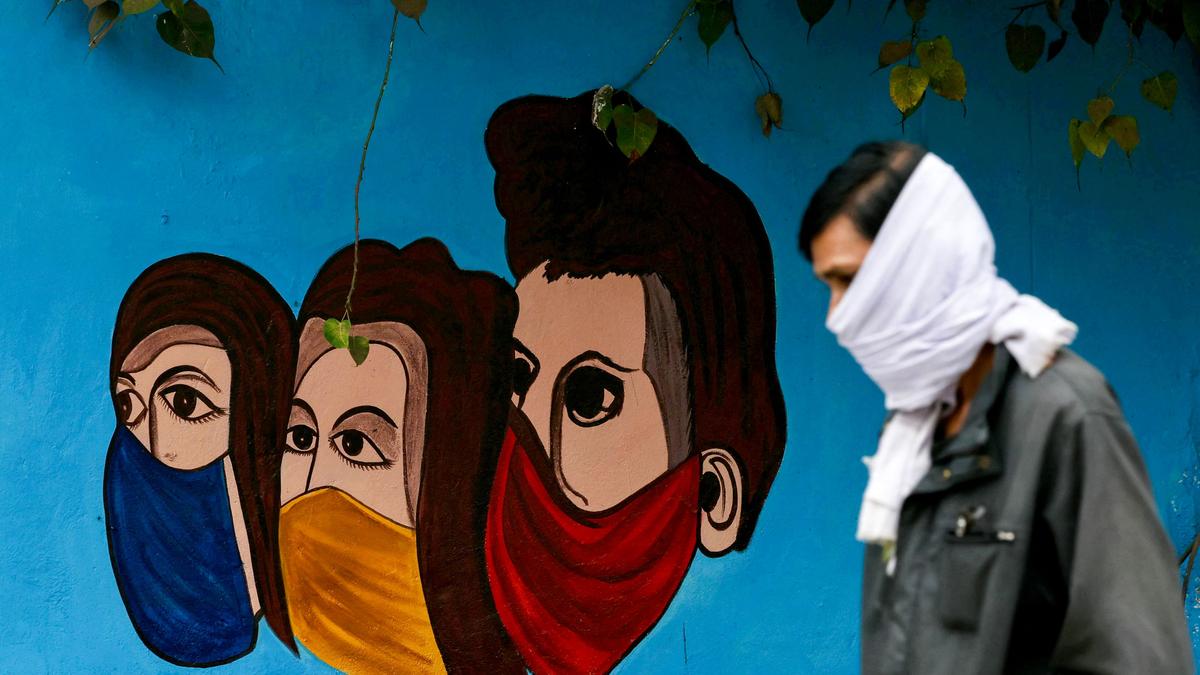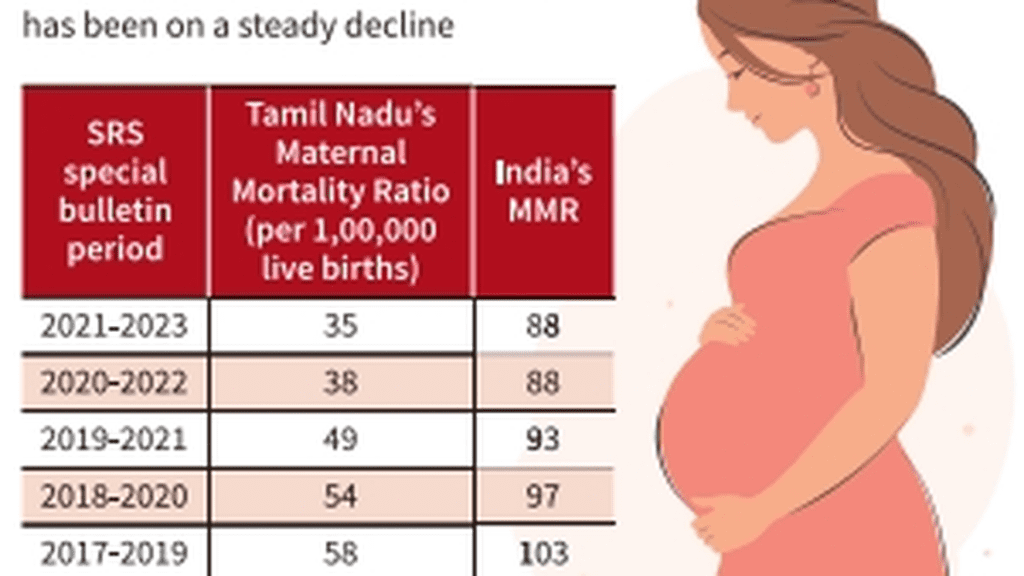Battling an infodemic: the curious case of HMPV Premium

Battling an infodemic: the curious case of HMPV Premium
(In the weekly Health Matters newsletter, Ramya Kannan writes about getting to good health, and staying there. You can subscribe here to get the newsletter in your inbox.)
Post the Covid-19 pandemic, it seems panic is an easy bait. In the last couple of days, all kinds of panic seems to rule the roost, as a common, seasonal, cold-causing virus gets detected in no alarming measure in the country. All hell broke loose, as ill-educated media filled prime time and columns with panic, about a new virus that had emerged out of China in December. The alarm bells were rung, loud and hard, as the comparisons to the Covid-19 virus emergence out of China some years ago turned the world around. Strangely the report that managed to cause the confusion, had little alarm to start with. A Reuters report said China was piloting a monitoring system for pneumonia of unknown origin, with cases of some respiratory diseases expected to rise through the winter. One of the pathogens that was detected, and which showed an upward trend in the northern provinces especially among people under the age of 14, was human metapneumovirus, as per the report. Somehow, things went from here to the pandemonium that we are witnessing today.
With not even a fig leaf of caveat, many media organisations came to wish upon the world the second pandemic in six years, not quite bothering to check first. We have tried to keep a calm head, we have underlined with every story that this is neither a new virus, nor as deadly as is being made out, we have tried to downplay the hype and hoopla and tell the story of the Human MetaPneumo Virus as it is.
So, we are going to leave behind articles that say how many cases of HMPV were detected, or where. It’s immaterial, as of now. It is the season for colds and HMPV is one of the viruses that cause it. Among the first explainers that went online is this one by Zubeda Hamid: Understanding Human Metapneumovirus, as cases emerge from China. Firstly, it’s not new, or mysterious : It was identified by scientists in 2001, as belonging to the Pneumoviridae family, of which respiratory syncytial virus (RSV), measles and mumps are also members. HMPV can cause both upper and lower respiratory tract infections and is generally seen in winter and early spring. Children, the elderly and those with weakened immune systems are more susceptible to the infection and to developing complications from it, but this might be the case with other infections as well. Secondly, it is not fatal as is made out to be, it is usually self limiting: Symptoms can resemble those caused by a common cold. They include a cough, runny or blocked nose, sore, throat, fever and wheezing. The estimated incubation period is three to six days. In most people, the illness goes away on its own within a few days, with rest and supportive care at home.
In the light of the unnecessary panic, the Health Ministry did many things, including issue public announcements from time to time. Bindu Shajan Perappadan kept tabs on that angle: No unusual rise in respiratory illnesses, influenza cases in India, Health Ministry says after review of Chinese surge. One would think it would suffice, but the rumour mills were over working, and counters had to be issued from time to time. They also said they were monitoring the HMPV outbreak in China, situation not alarming yet. A couple of days later, Union Health Minister J. P. Nadda issued a video statement in an effort to reinforce the harmless nature of HMPV. HMPV not new virus in India, he said, even as reports suggested cases were being recorded in India. A day later, we found ourselves reporting this again: No surge in respiratory illnesses says Union Health Ministry; advises States to strengthen awareness on HMPV.
Meanwhile, Siddharth Kumar Singh’s article, reported from the ground, speaking to specialists treating children, underlined what was becoming painfully obvious by then: HMPV is not a mysterious virus, we see it every year: paediatricians. Infectious diseases specialist Dr. Abdul Ghafur wrote a cracker of a piece for us, asking for calm to prevail, decrying the hype and hoopla and preaching reason. Don’t miss it: Human Metapneumovirus: let’s all calm down first.
The second, most-discussed health care topic this past week was the U.S. Surgeon General’s plea that cancer warnings be added on to alcoholic drinks. U.S. Surgeon General Vivek Murthy in an advisory on Friday (January 3, 2025), noted that the consumption of alcohol increases the risk of developing breast, colon, liver and other cancers. He also called for the guidelines on alcohol consumption limits to be reassessed so that people can weigh the cancer risk when deciding whether or how much to drink, alongside current warnings on birth defects and impairments when operating machinery. Doctors in India are beginning to pick up on this chant too, calling for statutory warnings to be placed on alcohol bottles as well, just as it is on tobacco products.
More news from the United States, the U.S. records first human death due to bird flu. The patient, who has not been identified, was hospitalised with the virus on December 18 after exposure to a combination of backyard chickens and wild birds, Louisiana health officials had said.
U.S. based cardiologist Dr. Dinesh Arab wrote a short history of therapeutics in cardiology: Tracing cardiology’s mechanisation: the move from pills to one-time solutions for heart ailments. A fascinating story that starts at the beginning and goes all the way through. Talking of cardiology, here’s a study that talks about the huge benefits of smoking cessation, calculating how much smokers gain in terms of years or days of life the moment they throw away that cigarette. What follows is an increase in life expectancy.
Another cardiologist, Dr. Anbarasu Mohanraj took time off to write that the soft core of a non communicable diseases epidemic, is obesity. Defining obesity and overweight, and its rise among youngsters, he cautions that a health life is cemented by healthy eating and a good dose of exercise.
In this context, it is best we tell you about Sathya Sriram and Akshay Ravi’s piece: India needs to prioritise preventive care. As the country sees an alarming rise in non-communicable diseases (NCDs) such as heart disease, stroke, diabetes, and cancer, the financial burden on individuals and the healthcare system continues to escalate, the authors, making a case for preventive health care checks. The facts are rather sobriety inducing: NCDs accounted for about 65% of all deaths in 2022, up from about 50% in 2010-13, as per the National Family Health Survey-5. The prevalence of risk factors for NCDs is worryingly high. One in four adult men are hypertensive. One in eight are diabetic. Further, breast, lung, and cervical cancer are on the rise, with the median age of diagnosis occurring earlier than global averages.
Dr. C. Aravinda looks at what can go wrong, with what might seem a regular course of treatment – paracetamols, examining if overdosing can turn tragic for the patient. Do read: Over the counter, under the radar: can paracetamol become fatal? Meanwhile, Dr. Radheshyam Naik lists out the huge leaps in terms of Advances in bone marrow transplantation in India which serve as a testament to progress and hope. The country has come a long way, and technology has improved things, but much more can be done in terms of improving access and affordability for more people than can currently benefit.
Here’s some good news from indigenous R&D. Purnima Sah reports that IIT-Bombay researchers have developed an affordable device for tinnitus diagnosis. Tinnitus is the perception of sound in the absence of any external stimulus. It results in severe sleep disturbance, depression, anxiety, negative impact on mental health, irritability, impacting social life. Overall tinnitus has a demoralising impact on the quality of life. This innovative product reduces the costs and proved effective in a clinical trial.
This week we are left with what seems like an all-IIT achievement record. Researchers from the Indian Institute of Technology-Guwahati (IIT-G) and the Bose Institute, Kolkata have developed an advanced injectable hydrogel for localised cancer treatment. They have designed a hydrogel that delivers drugs precisely to the tumour site, ensuring localised action. Hydrogels are water-based, three-dimensional polymer networks capable of absorbing and retaining fluids. Their unique structure mimics living tissues, making them suitable for biomedical applications. It is designed to remain insoluble in biological fluids, ensuring it stays localised at the injection site. It responds to elevated glutathione (GSH) levels, a molecule abundant in tumour cells.
This week, in the tailpiece section, AI comes to our rescue. Also, humanity’s rescue apparently: Machine learning can help blood tests have a separate ‘normal’ for each patient, reports Brody H. Foy. The author writes: “To develop better ways to capture individual patient definitions of “normal” lab values, my colleagues and I in the Higgins Lab at Harvard Medical School examined 20 years of blood count tests from tens of thousands of patients from both the East and West coasts. In our newly published research, we used machine learning to identify healthy blood count ranges for individual patients and predict their risk of future disease.” Why is this important? He illustrates thus: At the population level, for example, a normal platelet count is approximately between 150 and 400 billion cells per liter of blood. But your body may want to maintain a platelet count of 200 – a value called your set point. This means your normal range might only be 150 to 250.
In case you have a few more moments, do also stop by the following stories:
With a budget session coming up, R. Sujatha speaks to a health care expert on what lies ahead: India must up budgetary allocation for health to ensure quality standards of care
A.S. Jayanth flags an important issue: Amid rising concerns over short supply of Hepatitis B vaccine, newborn immunisations in Kerala’s private hospitals impacted
In case you have wondered about the ethics in the business and kickbacks for recommending diagnostics or drugs, here are the rules with regard to pharma companies giving ‘gifts’ to doctors in India.
Pharma units get 12-month extension to implement revised Schedule M of Drugs and Cosmetics Act
Adequate calcium intake, exercise crucial for young adults to prevent osteoporosis, say experts
National Health Mission mandates TB treatment, mapping of vulnerable populations for effective elimination
Doctors slam Maharashtra government decision to let homeopaths prescribe allopathic medicines
Science quiz: On cervical cancer
For many more health stories, head to our health page and subscribe to the health newsletter here.










